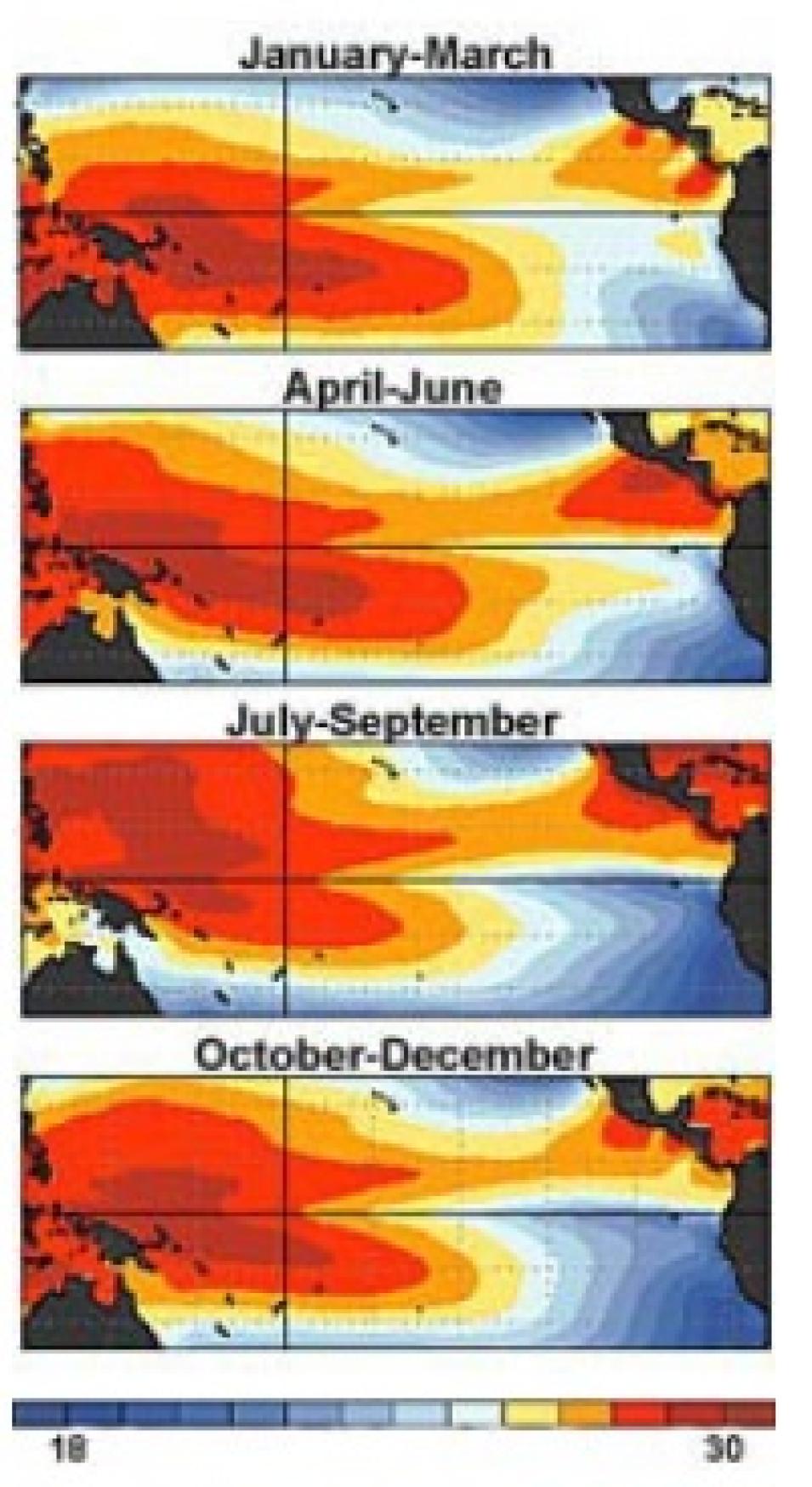Soden examined the change in heat trapped by greenhouse gases associated with the 1987 El Niño-Southern Oscillation (ENSO) event by studying the outgoing longwave radiation measurements made by NASA's Earth Radiation Budget Experiment (ERBE) satellite sensor. He compared ERBE data, stored at NASA's Atmospheric Science Data Center (ASDC) with simulations produced in a general circulation model, designed by the Geophysical Fluid Dynamics Laboratory.
"We were interested in using ENSO as a means of testing the model's ability to reproduce natural climate variability," Soden said. "We weren't really trying to understand ENSO, or predict ENSO, but rather use ENSO as a test for the climate model." Because there is inadequate observation of land surface temperatures, the study focused on the temperature changes and greenhouse effects of sea surface temperatures.
To perform his analysis, Soden used ERBE's outgoing longwave radiation (or heat) measurements that had been processed into average values for every month. Each pixel of data was 2.5 degrees (or approximately 275 square kilometers) in resolution. ERBE sensors flew on several different satellites so, to eliminate any possible differences in instrument calibration, Soden used data from only one ERBE sensor—flying aboard NASA's Earth Radiation Budget Satellite (ERBS). That ERBE sensor's data set spans from November 1984 to December 1989.
Then, to remove month-to-month variations and emphasize longer-term changes, those data were further processed, or "smoothed," into average values for 5-month blocks of time. Comparing ERBE's 5-month average values for outgoing longwave radiation with the computer model's estimated values of greenhouse gas trapped in the atmosphere, Soden saw a close agreement between the two data sets.
"We compared the observed radiation budget with that predicted by our climate model for the tropics," Soden said. "The model, when forced with observed sea surface temperatures, reproduced the observed changes in outgoing longwave radiation under clear skies."
The clear-sky greenhouse effect increased in conjunction with the rise in tropical sea surface temperature under El Niño conditions, he said. The change indicated a positive relationship between sea surface temperature and greenhouse trapping, and not a negative relationship, as had been previously theorized, he said.
"The results lend credibility to the model's ability to simulate sea surface temperature-driven changes in tropical moisture," Soden said.
References
Soden, Brian J. 1997. Variations in the tropical greenhouse effect during El Niño. Journal of Climate10: 1050-1055.
For more information
NASA Atmospheric Science Data Center (ASDC)
| About the remote sensing data used |
| Sensor |
ERBE |
| Parameter |
climate model accuracy |
| DAAC |
NASA Atmospheric Science Data Center (ASDC) |
